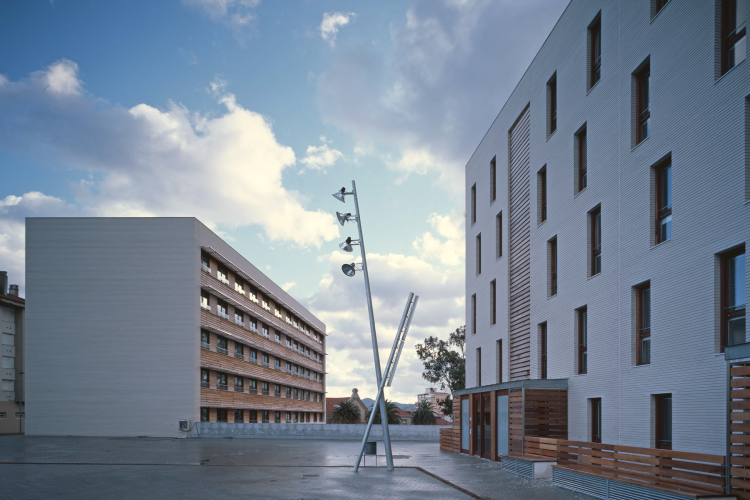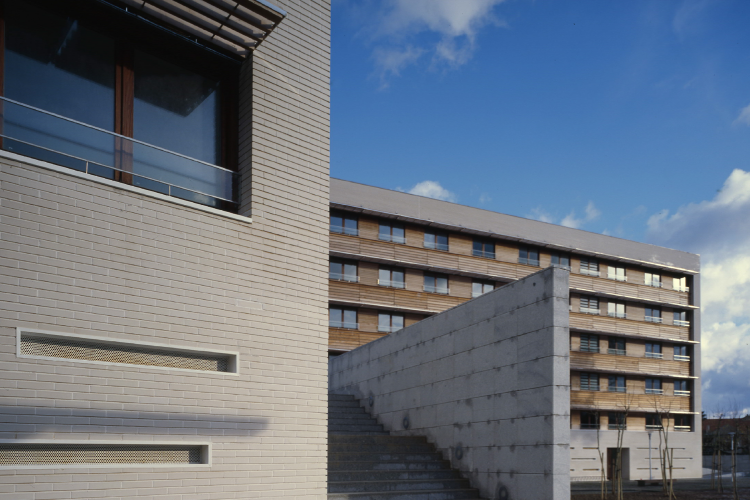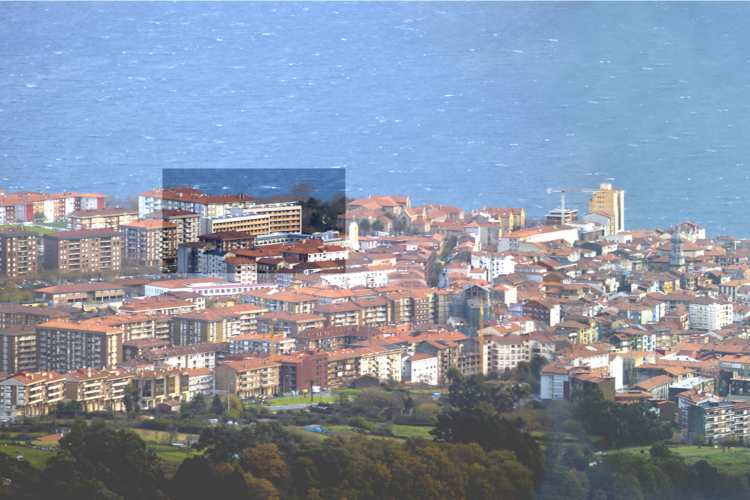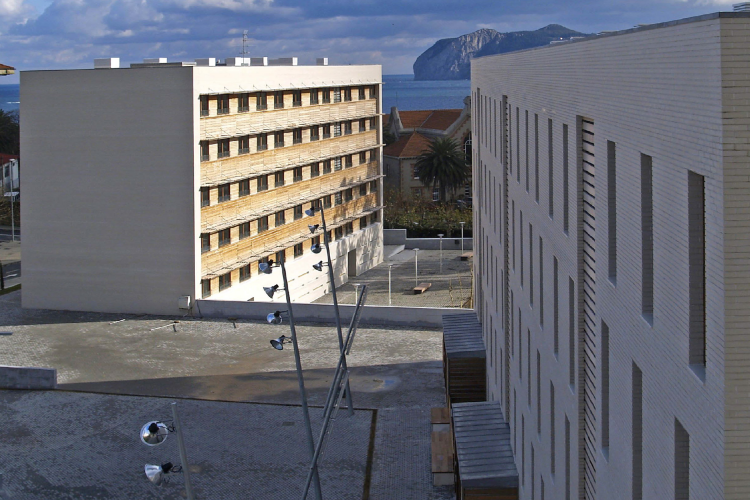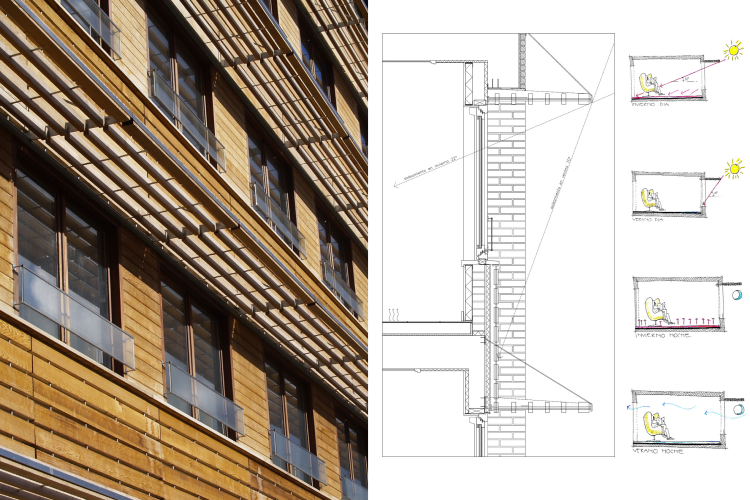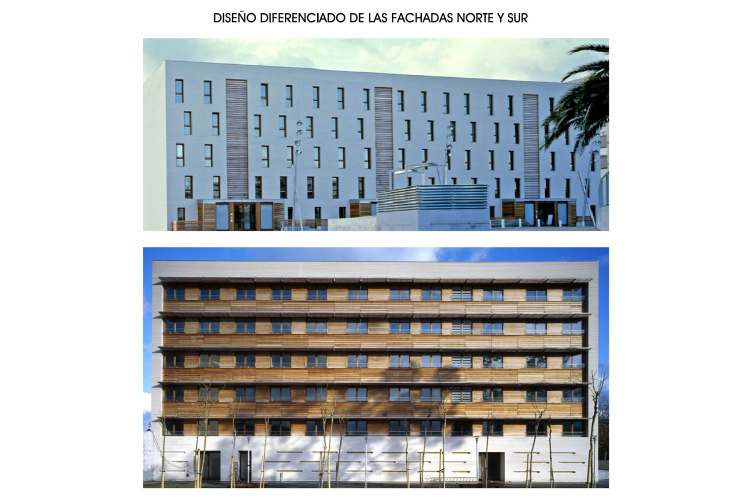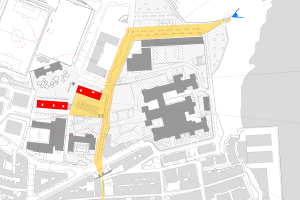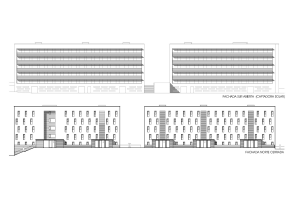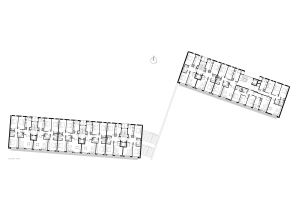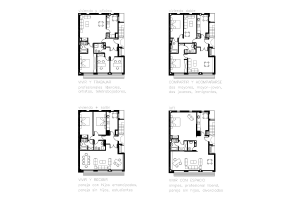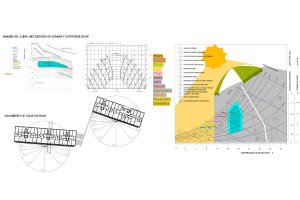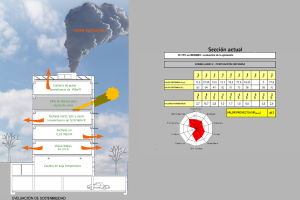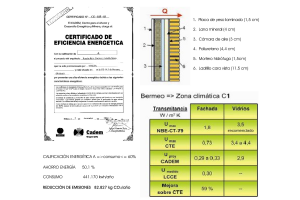50 bioclimatic subsidized housing and urbanization linked in Bermeo
Background The project at hand, architects Ramón Ruiz-Cuevas and Adolfo Moro, was winner of "Architectural Competition 1st VISESA XXI", in which research in the field of social housing for the new century arose. Changes in family and social structure, environment and new technologies require us to rethink the parameters used in the design and construction of social housing, and consequently, were the principles of flexibility, sustainability and quality that have guided this performance. Geography and climate study The plot that supports this action is located northeast of the town of Bermeo (Bizkaia), in an elevated area (average height 43 m.) And numerous facilities (cemetery, sports area, hospital, Sacred Heart School, House abound Child, etc.). Irregular and 8,480 m2 of surface shape, the area has a direct communication with the historic center of town through the Puerta de San Juan. In order to define the needs of our performance, climate survey of the area was conducted. Adopted solution In the specific case at hand also acquires a special significance urban settlement proposal must meet the challenge of ordering a complex space. The idea of the project is the enhancement of these facilities, connecting the urban fabric, creating public spaces that spring up in the area and create meeting places and the approach of a powerful architecture that gets together the disparate elements of the area . Access and urbanization of the environment are solved by integrating the surrounding streets and the House of the Child. Existing large trees bearing are maintained. The act defines two elegant volumes, rotated, creating a simple and rational public square double differentiated into two levels. The upper plaza, formed between two blocks and the Casa del Niño, becomes a viewpoint that opens to the sea, while the lower, more intimate place, protected from the north is transformed into a living space. The project is perfectly suited to the pre-existing sewing geometries of existing urban fabric. The blocks are configured as two closed boxes in northern facades and side opening to its south side, looking for the best sunshine and scenery. The materials proposed are white brick and cedar wood. Interestingly, the unique design of the facades depending on their orientation. The inspiration for the project was the Basque farmhouse that is always constructed according to the sun, to capture radiation passively. Urbanization With the idea of cause quality urban spaces creating a double differentiated public square in two levels arises. The upper level sets a space between the Casa del Niño and housing and opens through a viewpoint, the views of the harbor and the sea. The lower level forms a protected sunny northern and more intimate space that integrates the possible northern extension hospice. Between the two places is set a grand staircase of the above viewpoint and opens to the villa and the countryside. In this square most existing large trees porte be integrated. The elect are permeable pavements (cobble-grass) in order to ensure the sustainability of the development. Edification The buildings comprise two different pills and rotated among which is used to open a visual from the Casa del Niño to the landscape. The two blocks are configured as two boxes closest in its north façade and side opening on its south side, looking for the best sunshine and scenery. The materials on the south side are white clinker brick caravista setting box and glass paneling Red Cedar (Thuja plicata) from sustainable forests. The Action Plan is as follows: 50 apartments, 2 and 3 bedrooms and a day center for older people on the ground floor. In order to allow greater flexibility to all homes and to adapt to the ever changing life options (single parents, homework, etc.) a living cell base consisting of kitchen, central bathroom and the rest partitioning is proposed depending on the needs of its inhabitants. For this, elements are used plasterboard. Key Features The environmental commitment begins by finding the south facing (passive uptake in winter). The blocks are oriented north-south, south turning the main rooms. 1. bioclimatic design: a. Natural ventilation - Cross ventilation: The house benefits from double orientation that promotes natural air exchange. b. Differentiation north and south facades - Loss minimization north: small holes - Daylighting large gaps south c. Passive solar gain: large gaps south - Umbrellas that let in the sun only in winter - Dark flooring with high thermal inertia receiving solar energy d. Isolation: limiting demand - Siding with transmittance U = 0.3 W / m 2 K (59% improvement over CTE) - Double glazed windows and low emissivity (U = 2.9 W / m 2 K) 2. Facilities: a. Solar collectors for production of 62% of the needs of ACS, representing an annual saving of 4,900 Nm 3 of natural gas and 10.9 t of CO2 emissions b. Central heating and hot water for two buildings, low temperature boilers and underfloor heating in the Day Centre system. c. Efficient lighting systems: detectors and energy-saving lamps. d. Fitted kitchens with appliances type 3. Material: recyclable, clear and plant roof and pavement. 4. Flexible Housing: plasterboard partitions, installed on pavement and continuous ceilings. 5. Efficient Water Management: a. Collecting rainwater for irrigation. b. Faucets and toilets with low consumption. 6. Sustainable Urbanization: a. Permeable paving, allowing the natural water cycle, besides the savings in stormwater infrastructure. b. Maintenance of existing large trees bearing. c. Newly planted trees and grass.
Modalidad Public housing
Uso
Fecha de inicio de obra 2004-05-25
Fecha del certificado final de obra 2006-10-10
- Adolfo Moro
- Ramón Ruiz-Cuevas
- VIBESA
- Construcciones Bikani S.L.
- Juan Ruiz-Cuevas
- Pedro María Mendizábal


